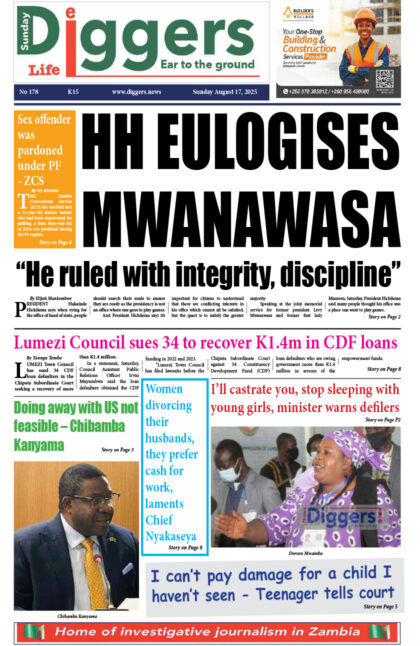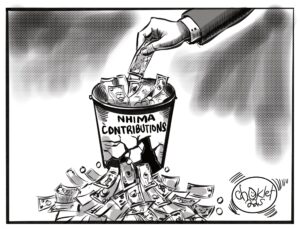There’s a storm brewing in our health sector, and it’s not one we can afford to ignore. Recently, major international partners, the same ones who have long bankrolled our fight against HIV/AIDS, malaria, and tuberculosis, have slashed their funding.
Now, at first glance, you might shrug. “That’s bad, sure, but how does it affect my sugar levels, my blood pressure, or the aches in my knees?”
Here’s the truth: our health system is not a collection of separate boxes: one for HIV, one for malaria, one for diabetes. It’s a single, overworked body. And when one part takes a heavy hit, the whole thing shakes. These funding cuts? They are an earthquake.
A Hole in the System
For years, international aid has rightly focused on tackling infectious diseases. Those resources built clinics, trained health workers, and kept supply chains alive. But here’s the thing: those same clinics, nurses, and delivery trucks don’t just serve one disease.
That nurse giving out HIV medication is the same one who checks your blood pressure. The van bringing malaria drugs is the same one meant to carry insulin. When the HIV and malaria budget shrinks, the ripple effects touch every corner of care. Suddenly, your clinic has fewer staff, fewer supplies, longer queues, and non-communicable diseases (NCDs) like diabetes, hypertension, heart disease, and cancers sink further down the priority list.
These are the quiet killers. They don’t make headlines the way a malaria outbreak does, but they creep into our lives through what we eat, how we live, and the systems we rely on. And if we don’t face them head-on, they will overwhelm us.
Beyond the Clinic Doors
This is where we need a shift in thinking. Our doctors and nurses are doing incredible work with what little they have. But if we only focus on treatment, we’ll always be chasing illness instead of preventing it.
Prevention doesn’t start at the hospital gate. It starts in our kitchens, our markets, and our schools. It starts with food.
Because let’s be honest: our food system is broken. Too many of us are surrounded by cheap, heavily processed foods that are high in sugar, salt, and unhealthy oils, and they are pushed on us through bright packaging and relentless adverts. Kids see it, crave it, and grow up on it. Meanwhile, the foods that actually nourish us, fresh vegetables, fruits, legumes, which are easily available, are not as glamourised.
This isn’t just “personal choice.” It’s the result of policies, trade deals, and profit-driven industries that put company bottom lines ahead of public health.
The Power of Food Movements
The good news? A new wave of voices, especially young people, are rising to say enough is enough. In South Africa, campaigns like Fix My Food aren’t just slogans, they are calls for justice. They understand that health isn’t only about pills and injections. It’s about making sure the healthy option is the easy option.
And here’s the beauty of this type of movement: unlike foreign aid, it doesn’t depend on shifting politics in Washington or Brussels. It can come from within. From Zambians who want better for themselves, their children, and their communities.
What Real Change Could Look Like
Imagine walking into a shop and immediately seeing clear labels on foods, warning you about hidden sugars or high salt.
Imagine local farmers being supported so that fresh produce is not only affordable but abundant in every market, from Lusaka to Lundazi.
These aren’t pipe dreams. Countries across the world are already making these changes, and so can we.
Why the Cuts Are a Wake-Up Call
The USAID cuts are painful, no doubt. But they should also serve as a wake-up call. For too long, we’ve leaned on outside funding to keep our system afloat. That support has been a lifeline, but it also made us vulnerable.
Now, we have no choice but to invest in ourselves, not just in medicine, but in prevention. Because if we don’t tackle the root causes of NCDs, we’ll never have enough clinics or doctors to keep up.
Our Responsibility
Here’s the hard truth: the fight for health isn’t just in the hospitals. It’s in the everyday choices we make and the pressure we put on leaders to create a healthier environment.
Yes, it means teaching ourselves and our families how to cook and eat in ways that protect our bodies. It means educating our own selves on what is healthy, organic and seasonally available to us in our garden, farms and from our local stores and vendors. It means realising that fixing our food system is not a luxury. It is the most urgent medicine we have left.
So, what do we do? We speak up. We support advocates. We hold ourselves accountable. And we make changes in our own homes, however small. Because every time we choose fresh over processed, and every time we push back against junk food, we are protecting not just ourselves but generations to come.
The fight for a healthier Zambia isn’t just about pills and needles and solely relying on foreign aid. It’s also about what we feed ourselves, what’s on our plates, what’s in our shops, and what we teach our children to value.
We can’t control international aid. But we can control our collective voice, our food environment, and our future. The storm is here. And if we act now, loudly, boldly, together, we can weather it, and we can come out stronger.
(Kaajal Vaghela is a wellness entrepreneur, sportswear designer, and diabetes health consultant with over three decades of lived experience managing Type 1 diabetes. Having previously served as the chairperson of the Lusaka branch of the Diabetes Association of Zambia, she remains a passionate advocate for breaking down myths and building awareness about diabetes. For more information, visit: www.kaajalvaghela.com and for any feedback: [email protected])
























